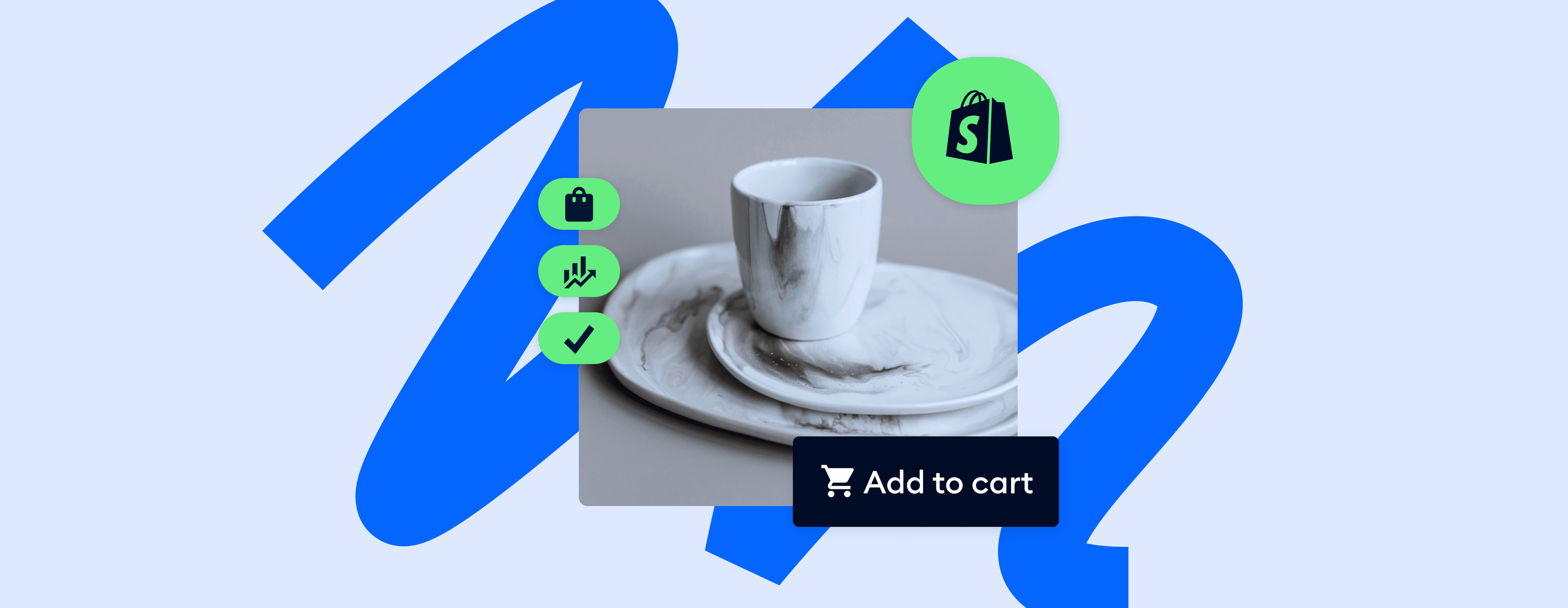You might be asking yourself “why am I not getting sales on Shopify?”
Well—
The most common reasons include no traffic to the website, a lack of trust from shoppers, and the absence of conversion or lead nurturing strategies. You should also check your product pages to make sure they’re not too generic and your promotional material.
Starting a Shopify store is one thing. Getting traffic and sales is another.
But don’t worry. We’re here to help you.
Here are the effective strategies on how to get sales on Shopify.
Increase your Shopify sales by providing in-store experiences online
Let’s get right into it—
10 best strategies for getting sales on your Shopify store
Whether you’re struggling to make the first sale or your store is experiencing a stagnation in growth, you need to change something to boost your business. Email, content marketing, and optimization of your store will help you with that.
So, if you’re wondering “how to make money on Shopify”, here are the most effective tips:
1. Optimize product pages
Optimizing your product pages is one of the most effective ways to boost sales on Shopify. Start by crafting clear, concise, and persuasive product descriptions that highlight both features and benefits. These descriptions should not only inform potential buyers but also motivate them to make a purchase.
Incorporating strategic keywords in your descriptions can improve search engine optimization (SEO), making your products easier to find online. To address common questions upfront, consider adding a FAQ section, which can reduce buyer hesitation and provide quick answers.
Visual appeal is equally important. High-quality product images that show your items from multiple angles or in different settings can build trust and enhance customer interest. Consider adding videos or 360-degree views to offer a comprehensive look at your product, giving shoppers a better sense of its value.

Customer reviews play a crucial role in driving conversions. Displaying authentic reviews next to your call to action provides social proof, reassuring hesitant buyers and encouraging them to follow through with their purchase.
Lastly, competitive pricing is key. Research competitors and ensure your pricing reflects good value for money. Special promotions such as bundle deals, discounts, or limited-time offers can further incentivize customers to buy, creating a sense of urgency and boosting sales.
2. Use targeted popups
Conversion-focused pop-ups capture visitors’ attention at key moments, such as when they’re about to leave your site or after they’ve browsed a product for a certain amount of time. These pop-ups should offer clear incentives, such as discounts, free shipping, or exclusive deals, that encourage immediate action. And ensure the design is clean and the messaging concise, focusing on what the target audience stands to gain from shopping at your ecommerce store.
In addition to pop-ups, integrating chatbots that offer personalized deals can further enhance your conversion strategy. AI chatbots can engage visitors in real time by answering questions, recommending products, or offering personalized discounts based on customer behavior and preferences.
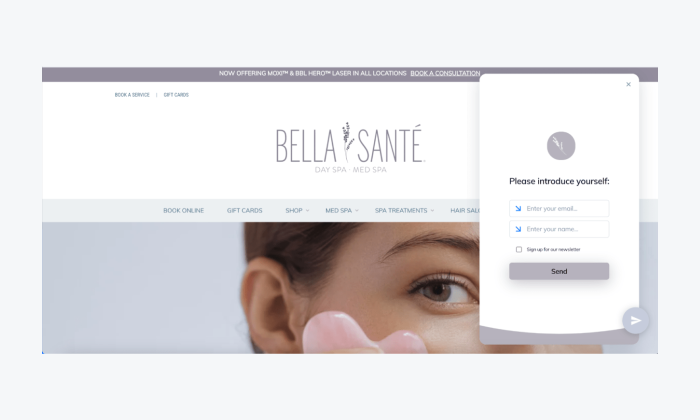
For example, if a customer has been browsing a particular product category, the chatbot can suggest related items or offer a special discount code to prompt a purchase. This personalized approach helps create a more engaging shopping experience, increasing the likelihood of a sale.
Read more: Discover how eye-oo boosted revenue by $177K after installing Tidio.
3. Market your store
To effectively boost sales on Shopify, promoting your store with a well-rounded marketing strategy is essential. A multichannel approach ensures maximum visibility by utilizing various tactics like SEO, content marketing, email campaigns, social media, ads, and influencer collaborations.
Social media platforms such as Instagram, Facebook, and TikTok offer excellent opportunities to engage your audience, showcase products, and drive direct sales with Shopify integrations. For example, you can run a targeted Instagram ad showcasing a new product line, or partner with an influencer to promote your products through a TikTok video.
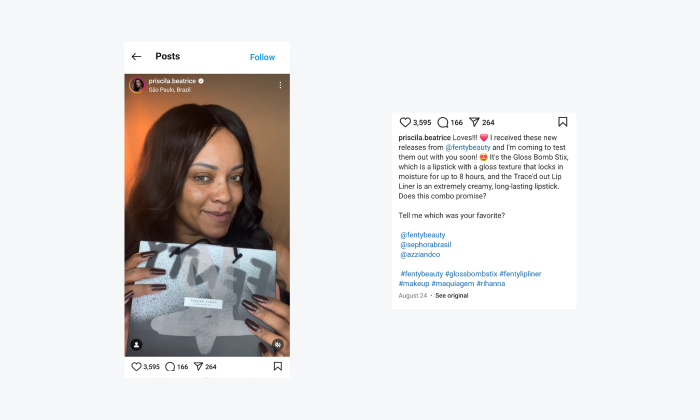
For sustained organic traffic, search engine optimization (SEO) is crucial. By optimizing product pages, blogs, and your website with relevant keywords like “eco-friendly kitchen tools,” your store will rank higher on search engines, increasing discoverability.
Personalized email marketing is another powerful tool to keep your audience engaged. Sending tailored offers, such as “20% off your next purchase” to repeat customers or abandoned cart reminders, helps maintain customer interest and fosters loyalty.
Creating urgency through scarcity tactics, such as limited stock alerts (“Only 5 left in stock!”) or countdown timers for flash sales (“Sale ends in 2 hours!”), can encourage immediate purchases by driving a sense of urgency.
Additionally, cross-selling and upselling can boost the average order value. For example, suggesting complementary products (“Customers also bought this mug with the coffee maker”) or offering an upgraded version (“Upgrade to the premium model for just $30 more”) enhances the shopping experience, increases sales, and encourages repeat business.
Read more: Learn how to create an effective Shopify marketing strategy.
Easily cross-sell and upsell products using automated chat flows.
4. Leverage email marketing
We’ve already mentioned email marketing campaigns briefly but let’s get more into it as it nurtures leads, retains customers, and drives repeat sales to your online business.
The first step is to build an email list by encouraging visitors to subscribe through sign-up forms, pop-ups, or special offers presented on your website. Once you’ve established a list, you can use targeted emails to promote new products, share exclusive deals, or re-engage inactive customers.
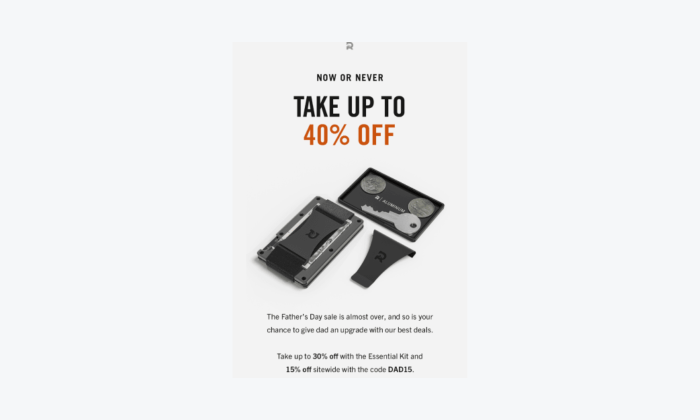
When looking for a tool, you should keep an eye out for the abandoned cart recovery feature. Many customers leave items in their carts without completing the purchase, but you can send timely reminders to encourage them to finalize their order. These emails can include abandoned items, offer a discount, or highlight free shipping to sweeten the deal.
Keep in mind that personalization is key. So, tailor your emails to specific customer segments based on their preferences, purchase history, or browsing behavior to maximize engagement.
Read more: Learn how to use Tidio’s campaign tool to manage your email marketing.
5. Run paid ad campaigns
If you’re an established business or have some money to spend on advertising, then ads are a great way to get Shopify sales. That’s because paid advertising is a powerful way to drive traffic to your homepage or to your landing pages. Platforms like Facebook, Instagram, and Google Ads offer vast reach and the ability to target specific audiences based on demographics, interests, behaviors, and past interactions with your store.
By running Facebook and Instagram ads, you can boost brand awareness and engage users’ straight from their feeds. This is a powerful tactic as it showcases your products in ways that align with customers’ interests.
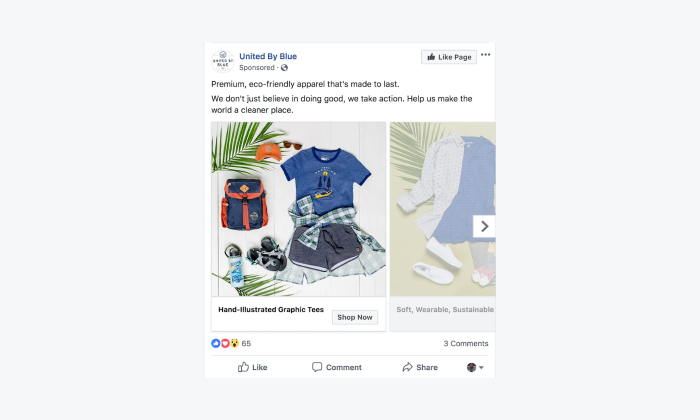
Google Ads, on the other hand, allows you to capture high-intent traffic by displaying your products in search results or through Google Shopping. This targets users actively searching for items like yours.
Focus on targeted audience strategies to get the most out of your paid ad campaigns. Use your Shopify data, like purchase history or browsing behavior, to create custom audiences tailored to specific buyer segments. You can also create lookalike audiences, targeting new potential customers who share traits with your most loyal shoppers. Additionally, retargeting ads are great for re-engaging visitors who browsed your site but didn’t complete a purchase, increasing the chances of conversion.
Read more: Discover how to write converting Shopify landing pages.
6. Boost trust signals
If you’re wondering “how to get sales on Shopify without ads”, this strategy is for you.
One effective way to boost trust signals is to display security badges and offer money-back guarantees. These reassure customers that their payment information is protected and reduce the perceived risk of making a purchase. The trust-building elements create a sense of security and can significantly increase conversion rates, especially for first-time shoppers.
To further build trust, leverage social proof by prominently displaying product reviews, star ratings, and customer testimonials on your product pages. Positive feedback from real customers can heavily influence buying decisions, as shoppers tend to trust the experiences of others. You can also incorporate user-generated content, such as photos of customers using your products, and collaborate with influencers to boost credibility.
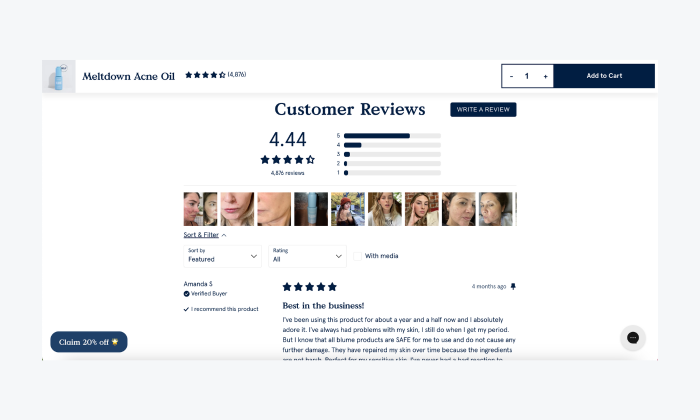
Starting a loyalty program is another excellent way to enhance retention and build long-term relationships. By offering rewards for repeat purchases, referrals, or social media engagement, you encourage customer loyalty to your store. As part of your loyalty program, you can offer exclusive discounts, early access to products, or points that can be redeemed for future purchases.
Did you know that…
Over 92% of people are concerned about unfamiliar sites and about 49% of consumers express concerns about shopping at online stores they haven’t shopped at before.
7. Simplify the checkout process
Whether you’re dropshipping or selling your products, shopping cart abandonment is probably your worst enemy. But a seamless and easy checkout process can help you minimize this rate and maximize sales on your Shopify store.
Customers who encounter a complicated or lengthy checkout experience are more likely to abandon their purchase. To prevent this, simplify the process by enabling login and guest checkout, which allows customers to complete their purchase without the need to create an account.
Additionally, you should implement autofill forms that can significantly streamline the process, helping customers quickly enter their shipping and payment details. This reduces the time spent on each step and minimizes the chance of errors.
Also, it’s very important that you offer a variety of payment options, including popular mobile wallets such as Apple Pay, Google Pay, and PayPal. This can help you cater to different preferences and ensure customers can use their preferred payment method.
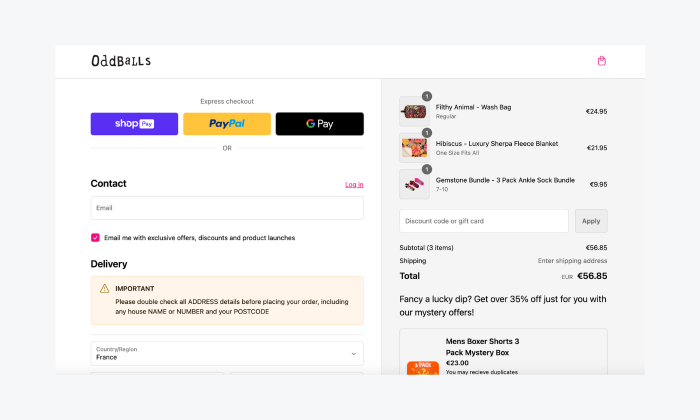
Read more: Check out how to start a Shopify dropshipping business.
8. Look at your shipping settings
Setting up optimized shipping options is a key marketing effort to enhance customer satisfaction and boost sales on Shopify. One of the most effective strategies is offering free shipping, as many customers expect it. And customers may change their purchasing decisions and abandon their cart if faced with unexpected shipping fees.
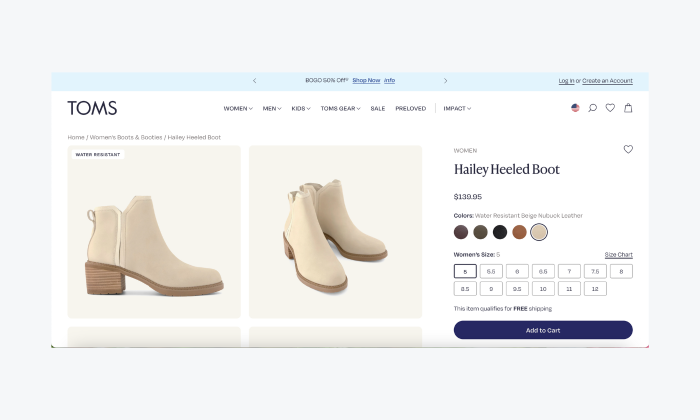
To provide free delivery without compromising profitability, consider incorporating shipping costs into the product price or offering free shipping on orders above a certain threshold. This approach meets customer expectations and encourages larger purchases as customers aim to qualify for free shipping.
In addition to shipping settings, you should also review and adjust tax configurations based on your specific region and the types of products you sell. Ensuring accurate tax settings will help you avoid compliance issues while providing a transparent and smooth checkout experience for your customers.
Did you know that…
Free delivery is important for over 83% of US buyers shopping online.
9. Install essential apps
Apps from Shopify App Store can extend your store’s capabilities, from email marketing to inventory management. This can help you manage various aspects of your business more efficiently and automate some of the processes involved in pushing the visitor down the sales funnel. So, you should browse the Shopify App Store to find apps tailored to your store’s needs, ensuring a smoother and more effective operation.
When looking through the available marketing tools, you should focus on conversion optimization apps, which enhance the shopping experience and boost sales.
Here are some of the best Shopify apps to increase sales:
- Apps like Smartviewer allow customers to preview product details without navigating away from the current page, reducing friction in the browsing experience
- Product reviews apps like Judge.me, showcase customer feedback, reviews and ratings, helping to build trust by providing social proof
- Upsell and cross-sell apps, like ReConvert, recommend complementary or higher-value products during the shopping and checkout process, increasing the average order value and encouraging repeat purchases
- Customer experience app, like Tidio, to answer visitors in real time, automate support processes, provide personalized recommendations, and more
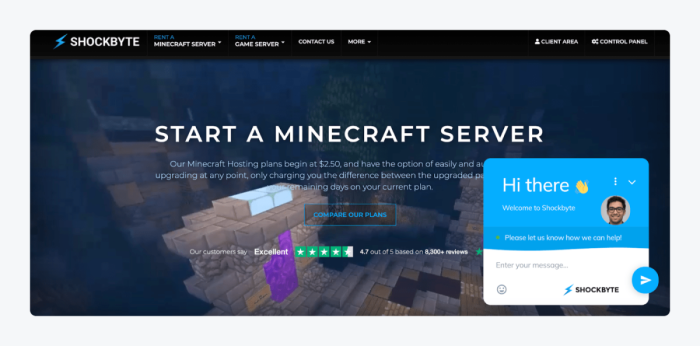
Read more: Check out a list of the best Shopify apps for your online store.
10. Optimize for mobile
Ensuring your store is mobile-responsive means that it will automatically adjust to different screen sizes, providing a smooth and user-friendly experience on smartphones and tablets. This is especially important as mobile devices account for 77% of traffic and 66% of order share for retail online stores.
Store owners can start by selecting mobile-responsive themes from Shopify’s theme store. These theme templates automatically adapt to different screen sizes, ensuring that navigation, product browsing, and the checkout process are easy and intuitive on different screens. Once implemented, test your store on various devices to ensure that everything functions smoothly and looks appealing.

In addition, you can streamline the mobile checkout process by minimizing the number of steps required to complete a purchase. So, enable auto-fill for shipping or payment details, and offer mobile payment options like Apple Pay or Google Pay. These features speed up the checkout process and reduce friction, making it more convenient for mobile shoppers.
Get more sales on Shopify
Growing your sales on Shopify requires a combination of smart strategies. By focusing on providing a seamless shopping experience, you can build trust, attract more customers, and drive conversions.
The key strategies to boost Shopify sales include:
- Optimizing product pages
- Using targeted pop-ups
- Marketing your store
- Leveraging email marketing
- Running paid ad campaigns
- Boosting trust signals
- Simplifying the checkout
- Adjusting shipping settings
- Installing essential apps
- Optimizing for mobile
With the right approach, you can steadily increase Shopify sales and position your online store for long-term success.
